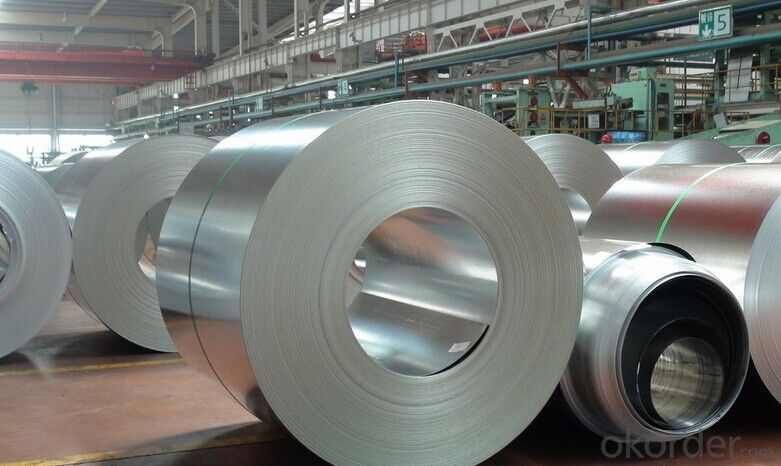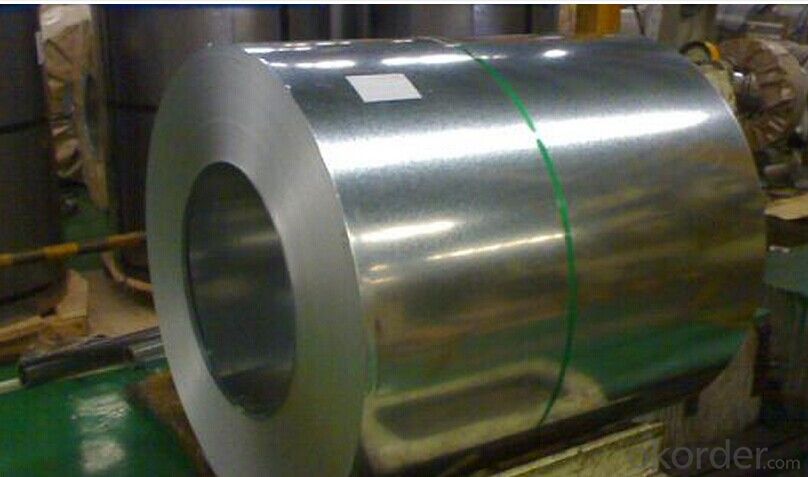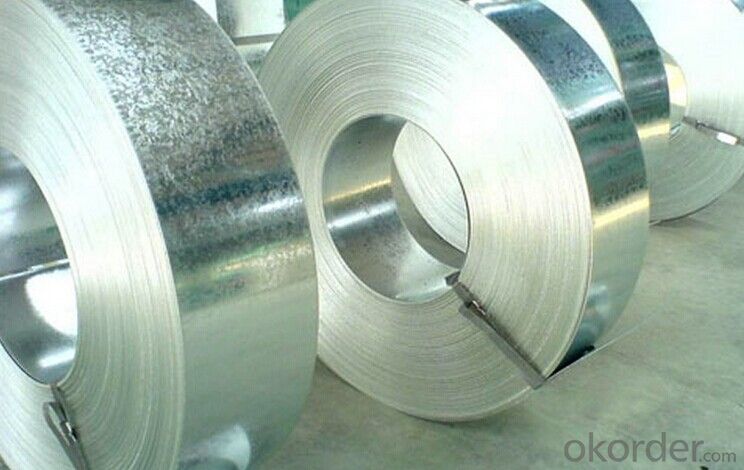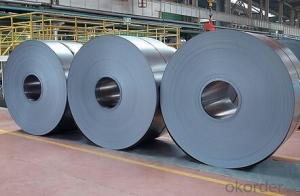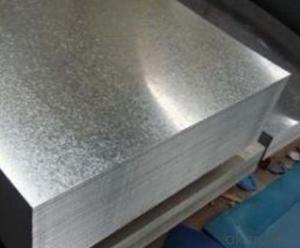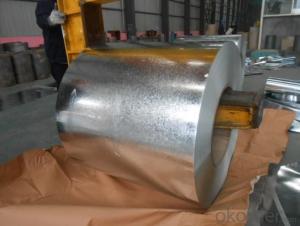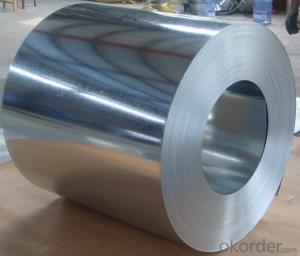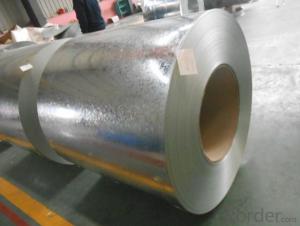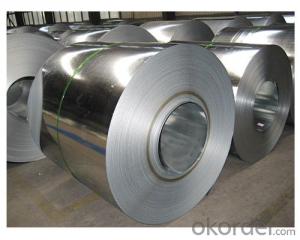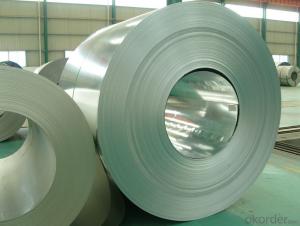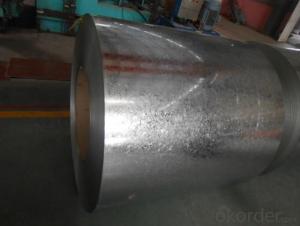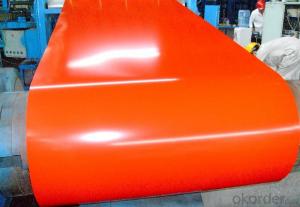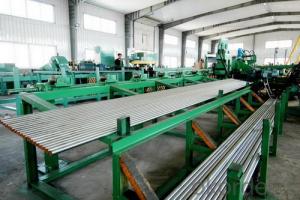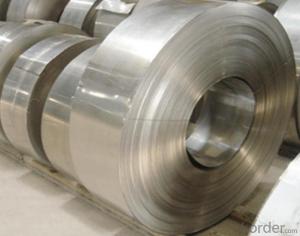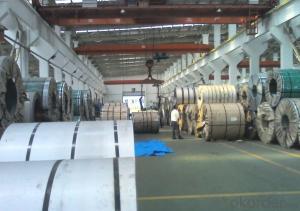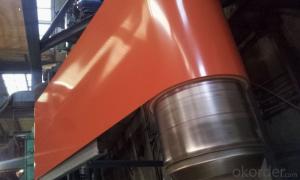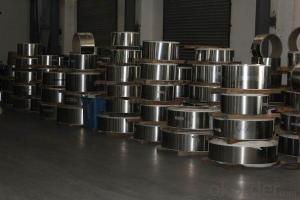Galvanized Steel Sheet in Ciols with Prime Quality Best Seller
- Loading Port:
- Shanghai
- Payment Terms:
- TT OR LC
- Min Order Qty:
- 100 m.t.
- Supply Capability:
- 10000 m.t./month
OKorder Service Pledge
OKorder Financial Service
You Might Also Like
1.Structure of Galvanized Steel Coil Description:
Hot-dip galvanized steel coils are available with a pure zinc coating through the hot-dip galvanizing process. It offers the economy, strength and formability of steel combined with the corrosion resistance of zinc. The hot-dip process is the process by which steel gets coated in layers of zinc to protect against rust. It is especially useful for countless outdoor and industrial applications.
2.Main Features of the Galvanized Steel Coil:
• Base material for countless outdoor and industrial applications
• High corrosion resistance
• High strength
• Good formability
• Rust- proof ability
• Good visual effect
3.Galvanized Steel Coil Images
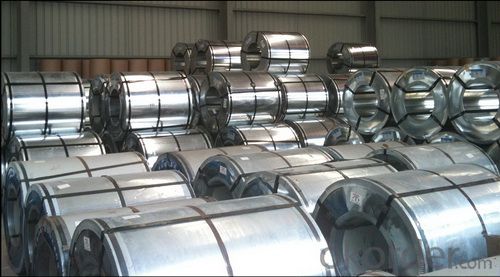
4.Galvanized Steel Coil Specification
Operate Standard: ASTM A653M-04/JIS G3302/DIN EN10143/GBT 2518-2008
Grade : SGCD,SGCH, Q195,DX51D
Zinc coating :40-180g( as required)
Width:914-1250mm(914mm, 1215mm,1250mm,1000mm the most common)
Coil id:508mm/610mm
Coil weight: 4-10 MT(as required)
Surface: regular/mini/zero spangle, chromated, skin pass, dry etc.
5.FAQ of Galvanized Steel Coil
We have organized several common questions for our clients,may help you sincerely:
1.How to guarantee the quality of the products?
We have established the international advanced quality management system,every link from raw material to final product we have strict quality test;We resolutely put an end to unqualified products flowing into the market. At the same time, we will provide necessary follow-up service assurance.
2. What is the minimum order quantity ?
Our MOQ is 50mt for each size. And we will consider to give more discount if you make big order like 1000 tons and more. Further more, the more appropriate payment term your offer the better price we can provide.
3.How long can we receive the product after purchase?
Usually within thirty working days after receiving buyer’s advance payment or LC. We will arrange the factory manufacturing as soon as possible. The cargo readiness usually takes 15-25 days, but the shipment will depend on the vessel situation.
- Q: How are steel strips used in the production of automotive components?
- Steel strips are widely used in the production of automotive components due to their strength, durability, and versatility. These strips are typically made from high-quality steel alloy and come in various thicknesses and widths to suit different manufacturing requirements. One common application of steel strips in automotive production is for the fabrication of body panels. These strips are often stamped or pressed into shape using specialized machinery to create components such as doors, hoods, roofs, and fenders. The high strength of steel allows for thinner panels, reducing the overall weight of the vehicle while maintaining structural integrity and safety. Steel strips are also commonly used in the production of suspension and chassis components. These strips can be cut, bent, and welded to form various parts such as brackets, brackets, and reinforcements. The strong and rigid nature of steel ensures that these components can withstand the heavy loads and stresses experienced by vehicles during operation. Furthermore, steel strips are used in the manufacturing of engine and transmission components. These strips can be formed into intricate shapes and then heat-treated or machined to achieve the desired strength and precision. Examples of such components include gears, shafts, valves, and crankshafts. The high wear resistance and heat resistance of steel make it an ideal material for these critical components that are subjected to extreme conditions. In addition to their mechanical properties, steel strips are also used for their corrosion resistance. Automotive components made from steel strips are often coated with protective layers such as zinc or paint to prevent rusting and ensure longevity. In summary, steel strips play a vital role in the production of automotive components due to their strength, durability, versatility, and corrosion resistance. They are used in various applications ranging from body panels to suspension and engine components, contributing to the overall performance, safety, and longevity of vehicles.
- Q: How are steel strips cut to the desired length?
- Various methods can be utilized to cut steel strips to the desired length, depending on specific requirements and available equipment. One commonly employed technique involves using a shearing process, where a shearing machine is utilized to cut the steel strip into the desired length. This machine comprises of two blades, one stationary and the other movable, which are utilized to apply a shearing force to the strip, resulting in a precise and clean cut. Another method involves employing a slitting process, whereby the steel strip is passed through a set of circular blades. These blades are positioned at a specific distance from each other, which determines the width of the strips being produced. As the strip passes through the blades, it is divided into multiple narrower strips, which can then be further processed or used in their current form. In certain cases, laser cutting technology can be employed to cut steel strips to the desired length. This method utilizes a high-powered laser beam to heat and melt the steel, enabling accurate and precise cuts. Laser cutting offers the advantage of being capable of cutting intricate shapes and patterns, making it suitable for intricate cutting requirements. Regardless of the chosen method, it is essential to securely hold the steel strip during the cutting process to maintain accuracy and prevent any undesired movement. Furthermore, proper safety precautions should be followed to protect workers and equipment during the cutting operation.
- Q: What are the different methods for embossing steel strips?
- There exists a variety of techniques for embossing steel strips, each possessing its own merits and applications. 1. Roll embossing remains the most prevalent method, involving the passage of the steel strip through a series of rolls with engraved patterns. The rolls exert pressure on the strip, resulting in the desired embossed design. Industries such as automotive, construction, and decorative applications widely employ roll embossing. 2. Heat embossing entails heating the steel strip before pressing it onto a patterned die. The heat softens the metal, enabling it to conform to the shape of the die. Heat embossing is particularly advantageous for intricate or elaborate designs that prove challenging to achieve through roll embossing. 3. Laser embossing represents a non-contact approach, utilizing a laser beam to create the embossed pattern on the steel strip. The laser selectively removes material from the surface, generating the desired design. Laser embossing offers remarkable precision and flexibility, rendering it suitable for complex and customized patterns. 4. Press embossing, also referred to as stamping, necessitates the use of a hydraulic or mechanical press to exert force on the steel strip against a die. The die possesses the desired engraved pattern, and the pressure from the press transfers the pattern onto the strip. Press embossing finds common usage in large-scale production and facilitates deep and uniform embossing. 5. Photochemical etching involves the application of a photoresist onto the steel strip, followed by exposure to ultraviolet light through a patterned mask. The exposed areas are chemically etched away, leaving behind the embossed design on the strip. Photochemical etching permits intricate patterns and is frequently employed for decorative or artistic purposes. Each method exhibits its own advantages and limitations, with the selection of a particular technique dependent on factors such as the desired design, production volume, precision requirements, and cost considerations.
- Q: Can steel strips be used in the renewable energy sector?
- Yes, steel strips can be used in the renewable energy sector. Steel strips are versatile and can be used in various applications within this sector. For example, they can be used in the construction of wind turbines, solar panel mounting systems, and other infrastructure projects related to renewable energy generation. In wind turbines, steel strips are used in the manufacturing of turbine towers. These towers need to be strong and durable to withstand the forces exerted by the wind. Steel strips provide the necessary strength and stability, making them an ideal material choice. Additionally, steel strips are commonly used in the fabrication of solar panel mounting systems. These systems are responsible for securing solar panels in place, ensuring maximum exposure to sunlight. Steel strips are often used as a structural element due to their strength, corrosion resistance, and cost-effectiveness. Furthermore, steel strips can also be utilized in the construction of other renewable energy infrastructure such as hydroelectric power plants and geothermal power plants. These plants require sturdy structures and components, and steel strips can provide the necessary strength and durability. Overall, steel strips have a wide range of applications in the renewable energy sector. Their strength, versatility, and cost-effectiveness make them a suitable choice for various renewable energy projects, contributing to the development and expansion of sustainable energy sources.
- Q: How are steel strips processed for temperature resistance?
- Steel strips undergo a variety of methods and treatments to enhance their temperature resistance. One widely used technique is heat treatment, which involves subjecting the steel strips to controlled cycles of heating and cooling. This process changes the microstructure of the steel, making it more resistant to thermal deformation and ensuring that it retains its strength and integrity even at elevated temperatures. Another method employed is alloying, where specific elements are added to the steel composition to improve its resistance to extreme temperatures. For example, the addition of chromium and nickel creates stainless steel, which exhibits excellent resistance to both high and low temperatures. This alloying process alters the chemical properties of the steel, making it more stable and less susceptible to oxidation or corrosion across different temperature ranges. Applying coatings to the steel strips is also a common approach for enhancing temperature resistance. This entails adding a protective layer, such as zinc or aluminum, which acts as a barrier against heat and prevents the steel from reaching critical temperatures. Coatings can also provide additional benefits like corrosion resistance and insulation. Moreover, cold rolling is frequently employed to enhance the strength and toughness of the steel strips. This process involves passing the steel through a series of rollers at room temperature, which not only improves its mechanical properties but also enhances its ability to withstand temperature fluctuations without compromising its structural integrity. In summary, achieving temperature resistance in steel strips involves a combination of heat treatment, alloying, coating, and cold rolling. These techniques ensure that the steel can endure extreme temperatures, maintain its strength, and withstand the adverse effects of thermal expansion and contraction.
- Q: Are steel strips suitable for electrical grounding applications?
- Yes, steel strips are suitable for electrical grounding applications. They offer excellent conductivity and durability, effectively dissipating electrical charges and providing a reliable path for fault currents. Additionally, steel strips are readily available and cost-effective for grounding systems in various industrial and residential settings.
- Q: Can steel strips be used in electrical transformers?
- Yes, steel strips can be used in electrical transformers. Steel strips are commonly used as laminations in transformer cores to reduce eddy current losses and improve the efficiency of the transformer.
- Q: How are steel strips used in the production of metal fencing?
- Steel strips are commonly used in the production of metal fencing as they serve as the primary material for creating the framework and structure of the fence. These strips are shaped, cut, and welded together to form the posts, rails, and other components of the fence, providing strength, stability, and durability to the final product.
- Q: What are the common surface finishes for galvanized steel strips?
- Galvanized steel strips can be finished in various ways, with some common options including: 1. Regular Spangle: This finish displays a shiny, crystalline pattern on the surface. It occurs naturally during the galvanization process when the zinc coating solidifies. 2. Mini Spangle: Smaller and closely spaced spangles characterize this finish, giving it a smoother and more uniform appearance compared to the regular spangle. 3. Zero Spangle: This finish lacks visible spangles, resulting in a matte or dull appearance. It is achieved by applying a special chemical treatment during galvanization. 4. Skin Pass: By passing the galvanized steel strip through rollers that compress and flatten the surface, this finish improves the strip's flatness and smoothness. 5. Bright Finish: A thin, transparent organic coating is applied over the galvanized surface to achieve this finish. It not only enhances the aesthetics but also provides additional protection against corrosion. It is worth noting that the choice of surface finish for galvanized steel strips depends on the specific application and requirements.
- Q: What are the different surface texturing methods for steel strips?
- There are several different surface texturing methods that can be used for steel strips, each with its own unique benefits and applications. One common method is shot blasting, which involves bombarding the surface of the steel strip with high-speed abrasive particles. This process creates a rough, textured surface that improves the adhesion of coatings, such as paint or galvanized coatings. Shot blasting can also enhance the appearance of the steel strip by creating a uniform, matte finish. Another method is pickling, which involves immersing the steel strip in an acid solution to remove surface impurities and oxides. This process can create a smooth, clean surface that is ideal for applications requiring a high level of cleanliness, such as food processing or pharmaceutical industries. Embossing is another surface texturing method that involves pressing a pattern onto the steel strip. This method is often used to create decorative or functional patterns on the surface of the steel strip, such as raised or recessed designs. Embossing can enhance the aesthetic appeal of the steel strip and can also provide improved grip or friction properties in certain applications. Roller leveling is a texturing method that involves passing the steel strip through a set of rollers to flatten and smooth the surface. This process is commonly used to remove imperfections, such as waves or curls, from the steel strip and create a flat, even surface. Roller leveling can improve the dimensional accuracy and surface quality of the steel strip, making it suitable for applications where precision is crucial, such as automotive or aerospace industries. Finally, there is also a method called etching, which involves applying a chemical solution to the surface of the steel strip to selectively remove material. This process can create a textured surface with a specific pattern or design, and is often used for decorative purposes or to improve the adhesion of coatings. Overall, the choice of surface texturing method for steel strips will depend on the specific requirements of the application, such as the desired surface finish, appearance, adhesion properties, or dimensional accuracy. Each method offers unique advantages, and it is important to consider these factors when selecting the most suitable method for a particular steel strip.
Send your message to us
Galvanized Steel Sheet in Ciols with Prime Quality Best Seller
- Loading Port:
- Shanghai
- Payment Terms:
- TT OR LC
- Min Order Qty:
- 100 m.t.
- Supply Capability:
- 10000 m.t./month
OKorder Service Pledge
OKorder Financial Service
Similar products
Hot products
Hot Searches
Related keywords



